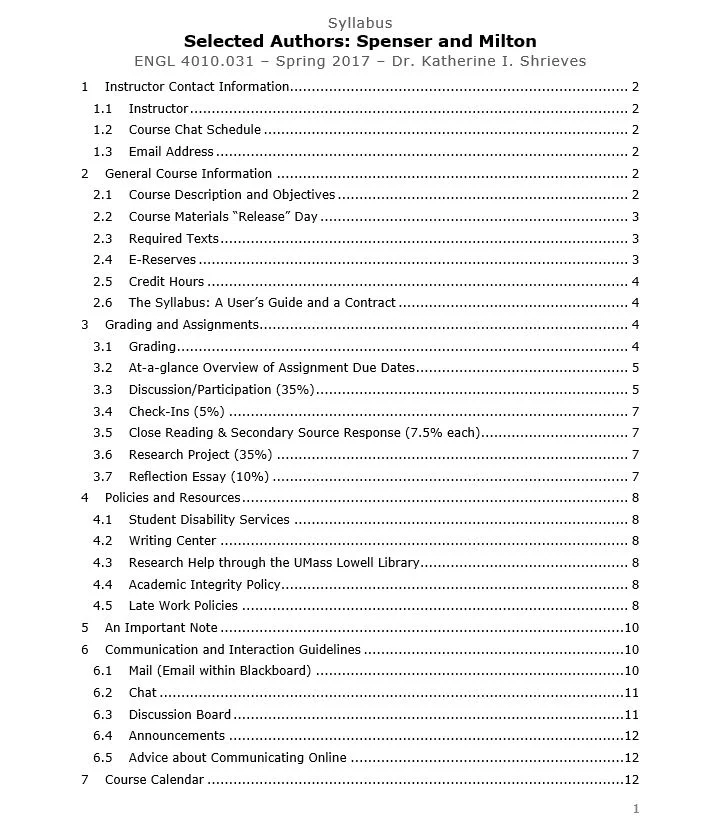Screencasts for Online Learning, Part 1: Why Make Instructional Videos?
In recent years, experts in online learning in a variety of disciplines have started to explore the benefits of video, particularly in the form of short, instructor-made videos (see, for instance, Pan et al. or Aragon and Wickramasinghe). When I first started teaching online, I provided weekly, written “lecture notes” for my students. Now, however, I’m moving increasingly toward screencasts. Here are some of the reasons that I personally have chosen to incorporate more videos into my classes:
Instructor Presence
In an asynchronous online class, establishing “instructor presence” can be a challenge. In other words, it’s important for students to feel connected to their teacher, to feel like she’s a real person, and hearing my voice can help to do that. Education research has shown that multimedia interactions help to build a sense of connection to the course (Boling et al.)
Variety of Media
Moreover, since I teach English courses, students are required to do a lot of reading, and switching to a different medium can be a refreshing change that increases student engagement (Schiefelbein). Some educational approaches also suggest that presenting material in both audio and visual formats activates different cognitive processes, increasing students’ ability to absorb what they’re reading and seeing (Sweller 68).
Choice and Accessibility
Finally, videos offer students more flexibility and choice than written lecture notes. With written lecture notes, there are essentially two ways to access my words: read the file or use a screen reading program. With a video screencast, students who prefer to watch and listen can do so; those who are blind can hear my voice rather than a screen reader; those who need captions can either watch with closed captions or read a transcript. Giving learners options also aligns with the central values of Universal Design for Learning.
Sometimes students teach me how they like to access the material. One student emailed me to say that she likes to print out the lecture slides and take physical notes as she watches, so she asked if I could provide the slide file. Now I do that as a standard practice whenever I create a screencast.
Are there times when written lectures are better?
Despite my move toward screencasts, sometimes I still think that a written lecture matches the teaching situation better. In particular, when I have a lot of information to impart, I’m sometimes concerned that the sheer length of video – even if it were broken into smaller pieces – might be counterproductive, whereas a written document can be read through more quickly.
Coming Next: Inside the Making of a Screencast
So, that’s why screencasts can be beneficial for online learning, but how difficult is it to create a screencast? Even someone with very little technical expertise can make a decent-looking video lecture. Next week in Part 2 of this essay series, I’ll walk through the process that I use to create screencasts, sharing my tips, tools, and steps.
Works Cited
Aragon, Regina, and Indika P. Wickramasinghe. "What has an Impact on Grades? Instructor-Made Videos, Communication, and Timing in an Online Statistics Course." Journal of Humanistic Mathematics 6.2 (2016): 84-95. http://scholarship.claremont.edu/jhm/vol6/iss2/7/
CAST. Universal Design for Learning Guidelines, v. 2.0. National Center on Universal Design for Learning. 2011. http://www.udlcenter.org/sites/udlcenter.org/files/updateguidelines2_0.pdf
Boling, Erica C., et al. "Cutting the distance in distance education: Perspectives on what promotes positive, online learning experiences." The Internet and Higher Education 15.2 (2012): 118-126. https://www.researchgate.net/publication/257496458_Cutting_the_distance_in_distance_education_Perspectives_on_what_promotes_positive_online_learning_experiences
Pan, Guohua, et al. "Instructor-Made Videos as a Scaffolding Tool." Journal of Online Learning and Teaching 8.4 (2012). http://jolt.merlot.org/vol8no4/pan_1212.htm
Schiefelbein, Jill. “Media richness and communication in online education.” Faculty Focus, 10 Apr. 2012. http://www.facultyfocus.com/articles/online-education/media-richness-and-communication-in-online-education/




